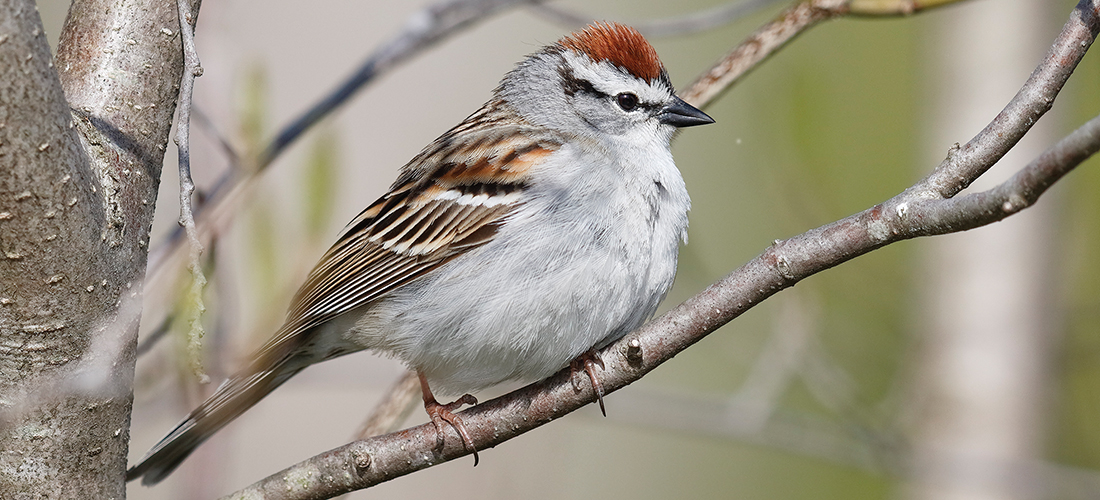
Chip on Your Shoulder
Listen for the machine-gun call of the feisty chipping sparrow
By Susan Campbell
Here in North Carolina, we’re lucky to have so many species of sparrows. As a group, sparrows can be a challenge to sort out. But one, the chipping sparrow, stands out. Even though Chippings are the smallest in the group, do not let their stature fool you! They are tiny — but feisty. And they may be found just about anywhere at any time of the year.
Only slightly larger than a chickadee, chipping sparrows have a chestnut cap and a black eye line, set off against a pale face and white eyebrow. The pale gray breast is unmarked and the back is a mix of browns and blacks typical of most sparrows. Young of the year have a brown, streaky head and pale streaks on the chest and flanks. In winter, all “chippies” will have, more or less, this same muted plumage.
This bird gets its name from its frequent “chip” calls. The bird’s song, however, is a long, staccato trill that is said to have a machine gun–like quality. Males will sing throughout the day, even on the hottest afternoons. They are territorial little birds and so are constantly on the lookout for interlopers. Trespassing is not taken lightly with shoving matches typically followed by a dogfight that gives the unwanted guest a clear message.
Chipping sparrows are found almost statewide and they tend to favor pine forests. However chippies are not fussy when it comes to neither the type of pine nor the abundance of trees. They do require clusters of needles toward the ends of branches as nesting substrate. Come nesting season, a loose cup of stems and fine grasses will be constructed. They almost always incorporate some type of hair in the nest: In the Sandhills, this is often horsehair. But it is a flimsy affair and will barely last the few weeks it takes to raise a brood of three to five young. Energy is directed toward producing multiple sets of young quickly in this species. The approach surely is successful given how well the population is doing in our area.
Chipping sparrows are drawn to feeders if small seeds such as millet or chipped sunflower seed are available. Otherwise they can be found foraging at ground level for tiny grass and weed seeds. Like most of our breeding birds, adults also seek protein-rich insects in summer to feed their voracious youngsters.
So keep an eye and an ear out for these little birds. They are not shy — in summer they can be downright approachable when distracted by family rearing activities. And come winter, chippies will form large flocks. A congregation of 75 to a hundred individuals is not unusual. They may be joined by migrant birds from further north, increasing the local population to astronomical proportions. OH
Susan would love to hear from you. Feel free to send questions or wildlife observations to susan@ncaves.com





